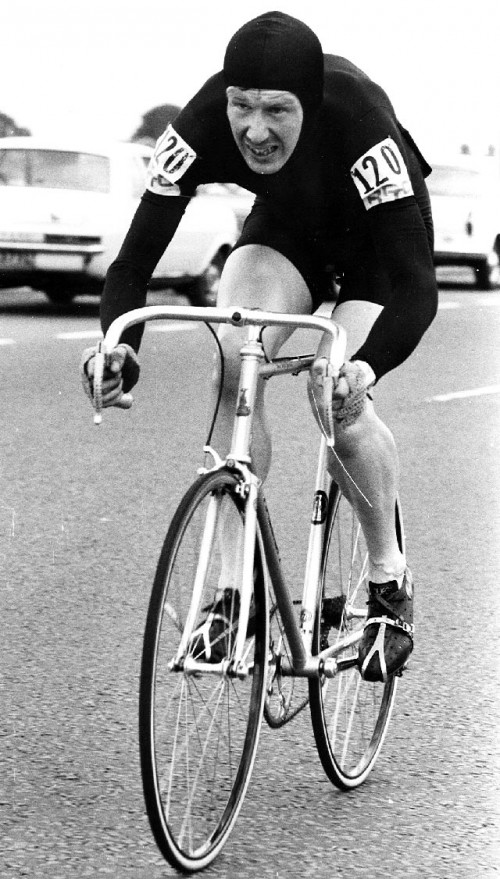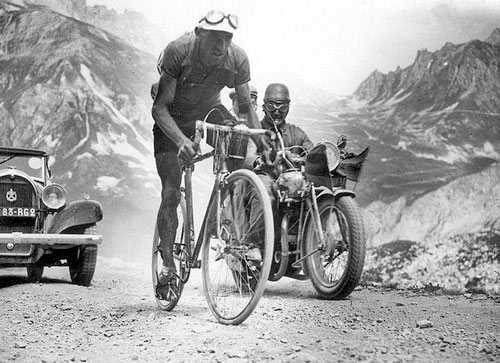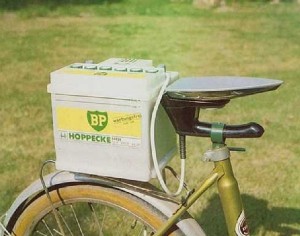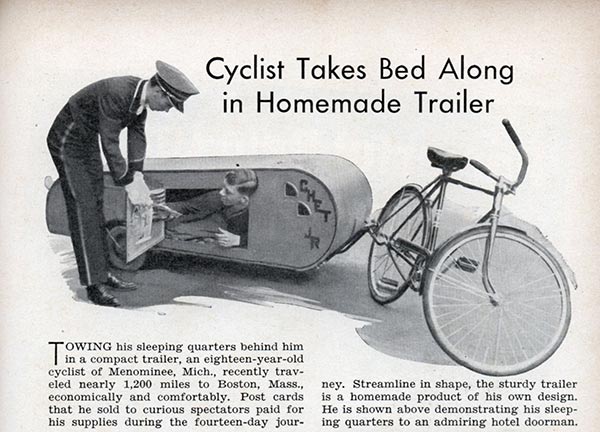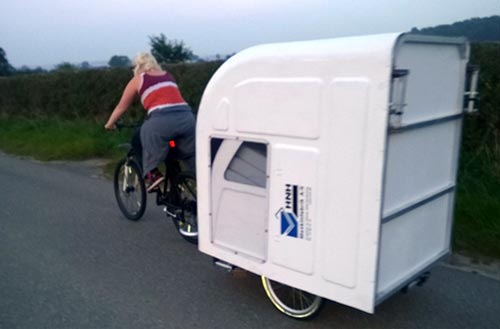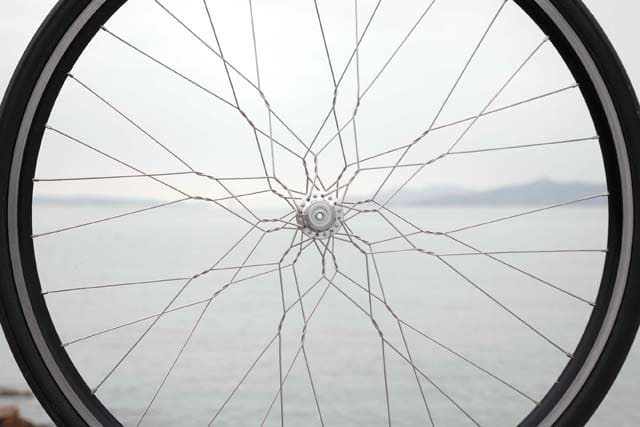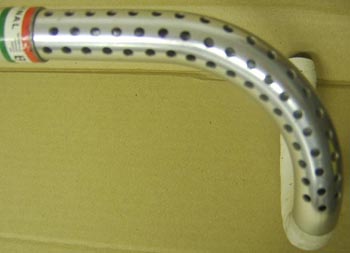I remember when I was 11, I owned a shell suit and thinking it was the greatest thing since Marmite. I’ve now expunged all photos of me cycling in a shell suit (good job no flickr.com in those days). It seemed like a good idea at the time, but now…
There are many things that seem like a good idea at the time, cycling is no exception.
The all over skin suit
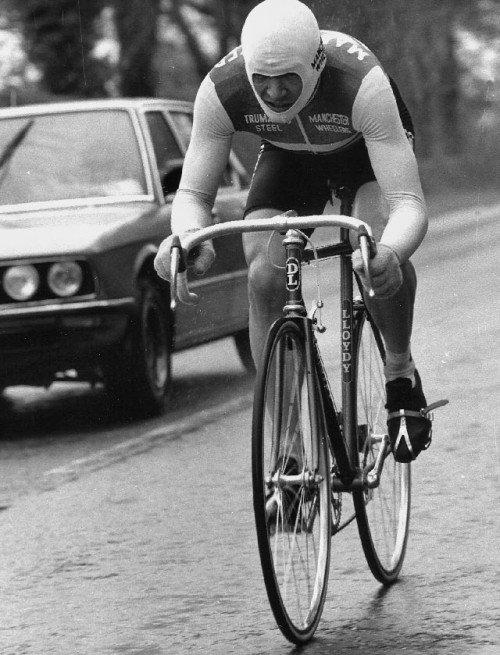
In the 1970s, these all over skin suits were all the rage in the time-trialling community. Apparently, dressing up in this figure hugging lycra piece was a couple of seconds more aerodynamic over 25 miles. The sad thing is that I’m drawn to the quality of the number pinning, which may well negate all the effort of that lycra onesie.
Dressing all in black
For many years in the UK, the RTTC had a regulation that cyclists must only wear all black whilst racing on British roads. The idea was to make the cyclist look less conspicuous – and so hopefully prevent anyone from noticing that we were doing something as rebellious as ride a bike.
These days, we go to the other extreme and wear fluorescent jackets and the like.
Fortunately, we have since invented stylish aero bike helmets – which are both faster and have also solved the problem of looking a little silly on the bike.
For many years, the top training tip of the European continental pros was – not to drink any water. The idea was that only an amateur would resort to drinking water. A really good training ride was when you could make yourself faint with dehydration and spend 48 hours without having to visit the bathroom. Even organisers of races made it difficult for riders to pick up water. Riders had to resort to raids on local cafes, where they would stop mid-race, nab some bottles of water (and if possible some hard liquor) and water (without paying of course) and then ride off. If you could afford domestiques they would get water and whisky for you.
Often riders took a bit of brandy and whisky mid-ride as this was considered a bit of extra help.
Dehydration was one of the factors in Tommy Simpsons death on Mont Ventoux.
Eating that raw steak
As late as the 1980s, the conventional wisdom for pro cyclists was that there was no better food for cyclists than eating a raw steak before a short 300km race. Apparently, raw steak was the perfect food for racing. I don’t know what vegetarians were supposed to eat. But, I can’t imagine chewing on a bit of raw steak in a 100mile TT, probably as messy as trying to eat an energy gel.
Using a piece of steak to prevent saddle sore.
Apparently a popular cure for saddle sore was to place a raw piece of steak in your cycling shorts – because it provides a natural seat. Though whether this piece of steak was then eaten for the next days breakfast is a matter procyclists seemed somewhat reluctant to speak about.
The bike with square wheels
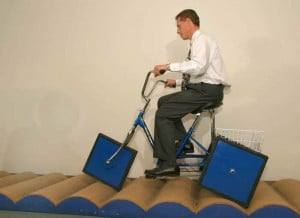
Credit: Stan Wagon
I think this must have been thought up on a late night after quite a few beers. But, it’s one thing to think up a crazy idea, it’s quite another to actually put it into practise. Of course, after creating this bike with square wheels, the inventors soon discovered the great problem it has – You just try getting a square inner tube – nowhere stocks it!
Though to be fair, if you come across a road with equal sized bumps, this bike works just fine, Perhaps I should try on the A31 H50/8 from Holybourne roundabout to Chawton.
Iron seat warmer
OK, I’m the first to admit than when it’s just above freezing, the idea of a heated seat could seem like a good idea. But, I can’t help but think this iron is like taking a sledgehammer to crack a nut, so to speak.
The Bike Caravan
What better way to see the country than cycle around with your own bed on the back? No wonder youth hostels were so popular for cycle touring back in the 1950s.
UPDATE: Wrong again. This wide path Caravan shows the bicycle caravan has been updated for the modern era.
Drugs
Somewhere in the history of pro cycling someone must have thought, why don’t we all spend 30% of our income on buying drugs so that we can put our lives on the line for a bit of added excitement? Of course, this drug culture was justified on the grounds that it didn’t change the results in anyway. Since everyone was taking drugs, it just meant they could ride events doped up to the eyeballs and take away that sensation of sitting on a piece of raw steak and the interminable dehydration of trying to ride 200km with a single glass of water.
The Penny Farthing

OK, the penny farthing looks pretty cool. When a penny farthing goes past you think that looks great. But, how many penny farthings do you see negotiating the streets of London? Cycling is dangerous enough without lifting yourself three feet of the ground so when you fall off a grazed elbow becomes a broken wrist.
(UPDATE: I wrote this piece a while back. I now have to admit I am totally wrong. The Penny Farthing is brilliant. Especially if you want to cycle from Lands End to John O’ Groats in nine days.)
Snowflake wheel spokes
Where bad design ideas overtake functionality (Mountain bike ideas)
Cutting your expensive carbon fibre components to save 50 grams
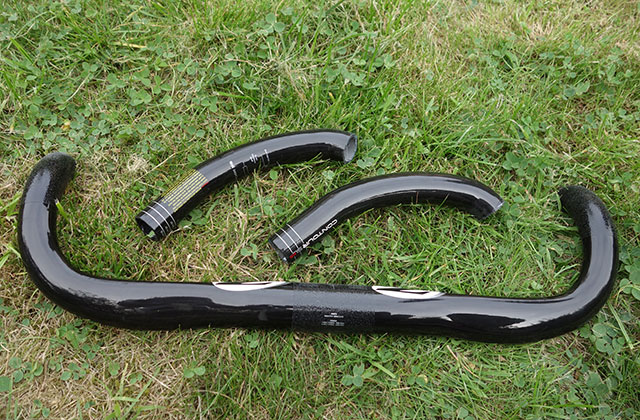
Marginal gains hill climb bike
and then not using it and not being able to sell on ebay because no one else wants a bit of cut up handlebar.
Drillium
In short, drillium is the art of drilling holes in your bike to save weight. It was all the rage in the 1960s and 70s. Luminaries, such as Eddy Merckx spent hours drilling holes and naturally many aspiring cyclists followed suit.
The sad thing is that it probably didn’t make anyone go faster because weight isn’t so important in flat time trials, but holes are less aerodynamic. In fact it probably slowed down riders and ruined many a good component.
Photo – Drillium at Classics Lightweights
What is this?
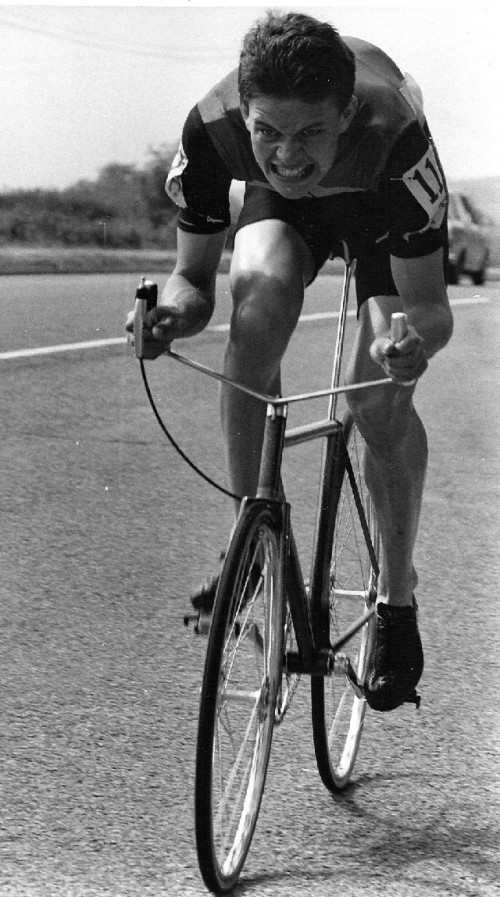
To be fair, Graeme Obree upturned his handlebars and revolutionised bike design so much, the UCI had to intervene and ban these aerodynamic positions.

Notice the excellent socks and the massage by the side of the road.

